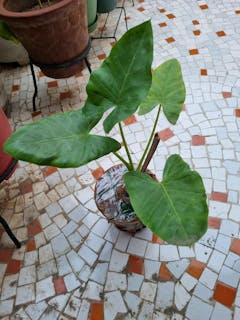Splendid Slipper Orchid
Family
Orchidaceae
Origin
Yunnan & India
Description
Cypripedium Insigne or Paphiopedilum insigne is a rare and endangered terrestrial orchid with leaves up to 2.5 cm long, broadly linear, strap-shaped, pointed, pale green. Flowering stem is about 30 cm long. Flowers are variable in color; dorsal sepal with white tip portion spotted purple, base light green. Petals are linear-oblong, margin wavy, hairless, yellowish-green. Lip is helmet shaped, light or yellowish-green with a brown shade
Environment
Grow Cypripedium in a shaded position in summer, with protection from direct sunshine. Move to a position in bright, un-shaded light in winter. They can be grown on east-, south- or west-facing windowsills. The plain-leaf Cypripedium requires slightly more light than the mottled-leaf kind, so they will like a south eastern-facing window. Of course, all of them also can be grown under artificial lights. Slipper orchids are less sensitive to low humidity because of the low light they receive. But humidity that is too low can cause the buds to die prematurely, so you should make sure the humidity does not drop below 40%. Use a shallow tray of pebbles filled with water to increase humidity around your plants. Be sure the pot does not sit in water as this will rot the roots.
Give your plants room for air to circulate around them. Crowding of plants can lead to problems with insect infestations and fungus. A small fan will help provide good air circulation around your plants.
Potting & Media
Grow these orchids in small deep pots to accommodate the large furry root system. You can pot them in bark, perlite, charcoal along with sphagnum moss to retain moisture. Alternatively, you can substitute bark with coconut husk chips as they do not break down as quickly. Just be sure to wash coconut husk chips very well to get rid of any remaining salt before potting. Salt will burn orchids roots.
Fertilize
Any balanced orchid fertilizer (look at the numbers on the container, 20-20-20, etc.) can be used to fertilize your orchid. Weakly ( strength), weekly works well. Once a month use clear water to flush any accumulated salts from the potting mix.
Landscape Use
Ideal for container plant or mixed border.






















